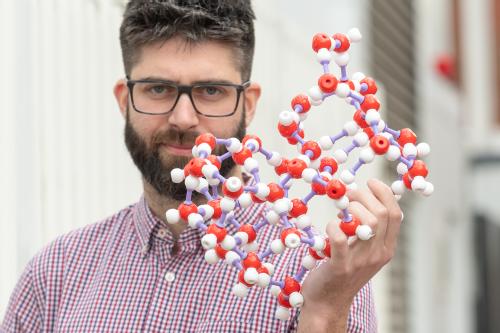Cryopreservation to Store Biological Materials


The way ahead for future healthcare is using cryopreservation to store biological material for novel treatments such as regenerative and translational medicine

Dr Gabriele Sosso, Department of Chemistry, Warwick

I was lucky enough to grow up with science all around me. But it was an eccentric, characterful teacher at high school who really inspired me to follow in their footsteps. I’ve never looked back since, and now I’m an Associate Professor at Warwick.
Most of my work focuses around condensed matter. My colleagues and I are especially interested in phase transitions, like water turning into ice.
Ice and water are obviously incredibly relevant in our everyday lives, so you might think that by now we would know everything there is to know about how water freezes or ice melts. But actually, we’re still trying to answer some very old questions that have serious implications in terms of furthering a number of practical applications, from atmospheric science to healthcare technologies.
How can we describe these transitions? How can we translate them into numbers? Over the last few years, the capabilities of experimental techniques have evolved hugely: today, some scientists can even watch ice forming and grow in real time at an incredibly small scale. And yet, computer simulations are needed to gain molecular-level insight and complement the experimental work – this is what we do in my research group.
Yet, as things stand, we just can’t get to the point of looking at the molecular level, particularly because ice almost never forms in isolation; more often than not, ice forms onto something or into something, whether that’s tiny particles of dust or cells inside the human body. That’s where computational scientists like me come in.
Simulations give you the kind of molecular insights that experiments are incapable of providing, particularly when it comes to water and ice at the interface with biological material, hence we really need both sides of the coin – the computational and the experimental – to work together to give us a full picture. Crucially, improving our knowledge of how ice forms has all kinds of potential applications.
For instance, the formation of ice in clouds has a huge impact on the water cycle, hence people like meteorologists can leverage my work to improve their understanding of climate models. What I’m particularly passionate about, though, is cryopreservation – that is, using very low temperatures to preserve structurally intact living cells and tissues. This is not a curiosity, but a necessity, if we want to deliver all the next-generation medical treatments that are being developed as we speak. All of those rely on the availability of delicate biological material, that has to be stored somehow – and freezing is our best bet.
How we store very sensitive biological material can have a huge impact on whether or not blood, cells, tissues, and perhaps one day even whole organs might survive the freezing process and remain viable assets for medical treatments. Sadly, the current cryopreservation technologies are incredibly inefficient – for instance, a lot of frozen blood is wasted upon thawing because of these limitations.
With cryopreservation, we want to have as little ice as possible, because the more ice you have, the less happy the human cells will be. Thus, my job is to provide the ideas and the rationale that can help people design chemicals that can control the formation of ice within biological material. It’s a big problem we must conquer if we want to deliver transformative treatments such as regenerative medicine.
My research focuses on looking at ways to effectively freeze biological material for future use – one day, we might even be able to store entire organs for organ transplants. At the moment, the best that’s been done is, to the best of my knowledge, to freeze a rabbit’s kidney, so there’s a huge issue of scale to work up from.
I lead the Sosso Group at Warwick and we’re lucky enough to have members from across Physics, Mathematics and Engineer, who can sometimes solve a problem I’ve been thinking about for two months in two minutes. You need the disciplines and specialisms to work together, and that’s why Warwick is a great place to be. I came here because of the excellent people who were working on ice already; in all fairness, if you want to study ice, there’s no place like Warwick. And it’s easy to take for granted at times how we also have these incredible computational resources that few other institutions in the UK, or even the world, can compete with.
What helps me the most, though, is how easy it is to collaborate at Warwick, not just within the Department of Chemistry but across the whole of the Science Faculty as well. This is absolutely key, as if we want to control the formation of ice and use it to make a difference, we really need to work together.

Department
Find out more about the department and the research and teaching taking place.

Related research
Explore the research taking place at Warwick and the researchers working to better the world.

Making an impact
Tackling issues across the Sciences, Arts, and Social Sciences. Discover how we're changing lives through our research.
